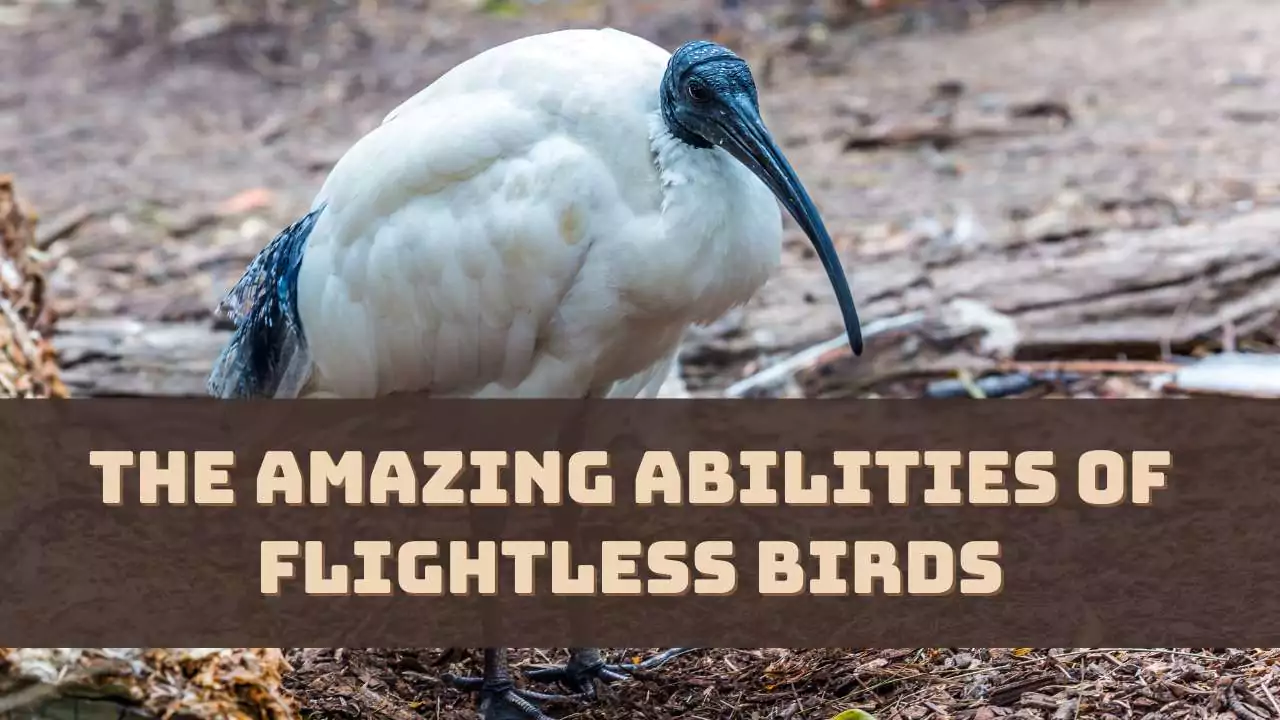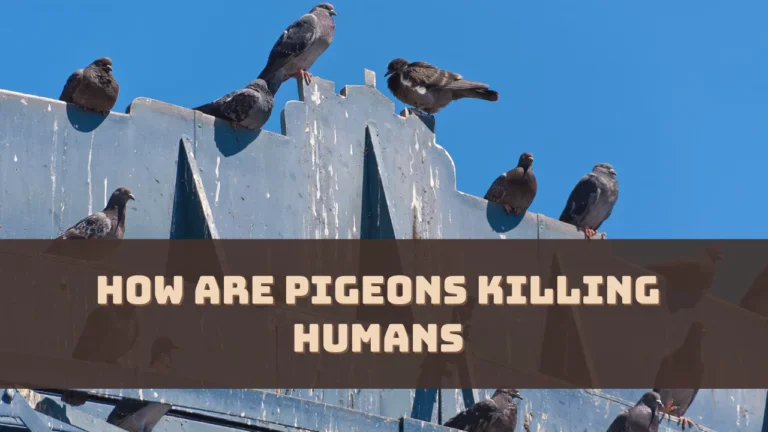Flightless birds are popularly known as running birds due to their adaptability to survive without flying. The most popular example is ostrich and the lesser known is kiwis. All these flightless birds have similar characteristics and behavior. They also can thrive across a wide range of habitats, such as deserts, forests, etc.
These flightless birds have specific nutritional requirements and also need a spacious environment to thrive. However, many flightless birds are also listed among the endangered species due to loss of habitat.
So, let’s get to know more about these flightless birds and what characteristics group them among this unique avian list.
Common Physical Characteristic Among Flightless Birds
Birds that are ground under the list “Flightless” have certain physical characteristics, such as –
Wings and Feathers
These birds have underdeveloped wings making them incapable of flying. Some either have smaller wings while for others there is a complete absence of wings. Rather than helping them to fly, their wings impart them with balance and stability when they are trying to navigate through the surroundings. Their uniquely adapted wings do not have aerodynamic qualities, rather, they provide them protection, insulation and also act as a display during courtship.
Legs and Feet
These flightless have powerful legs and feet, which enable them to smoothly conduct terrestrial locomotion. It provides them the strength to run, swim, or even go through different ranges of landscapes. The feet are specifically adapted for certain habitats, based on their lifestyle.
Beak and Mouth
The beaks of flightless birds are robust based on their unique feeding habits and food preferences. Specific food is available in specific habits and based on that their beaks are strong, and sharp to feed, either on vegetation or on the carcass of animals or for catching small animals. Some flightless birds also have long slender beaks to catch or dig invertebrates.
Size and Weight
Flightless birds are seen in various sizes and shapes. They also have a heavy weight which restricts their flying capability. To adapt to the ground-dwelling lifestyle, they have an increase in size and weight when compared with other avians, as a larger body helps to fight predators and also provides them the ability to thermoregulate. They also gain stability due to their weight while locomoting through water.
Coloration and Camouflage
To protect themselves from predators, these flightless birds have developed a wide range of coloration and camouflage strategies, which help them to blend in the environment. They are usually seen in neutral colored feathers which help them to hide in their open habitat. Some also have vibrate colors which work as visual signals for mating or territorial defense.
Behavioral Adaptations of Flightless Bird
To compensate for their inability to fly, they have developed other behavioral adaptations, such as
Running
The most prominent adaptation that a flightless bird went through is the ability to run. It can reach a speed with its powerful legs which can be compared to any terrestrial animal. Often it has been recorded that flightless birds have more speed than the ones who can fly, this helps them to keep themselves safe from predators. They can also cover long distances in search of food.
Swimming
They have developed impressive swimming skills to catch their prey and it also involves deep diving. Flightless birds use their wings as flippers and they can go to great depths in search of food, and this skill also keeps them safe from predators.
Nesting and Reproduction
The flightless birds can either build nests on the ground or find any protected areas which can help to camouflage their eggs. Some are even seen to raise nests out of vegetation which keeps the nest and the eggs safe from harsh weather and predators. Moreover, flightless birds are seen to go through elaborate courtship rituals and display. They are seen demonstrating their physical fitness to attract mates.
Feeding Habits
Being flightless, they get a great variety of food options on the ground. They are mostly omnivores and best suited to their habitat, they look for food. They are also seen foraging for fruits, insects and seeds.
Social Interactions
Based on the species, they can be either monogamous or polygamous pair. They show the complex social structure and some even prefer to live in social groups or hierarchies. Their social interaction involves protection, foraging, and cooperative breeding. They tend to communicate through vocalization, body language or physical display.
Challenges Faced by Flightless Birds
Flightless birds also face many challenges as they lack the ability to fly, such as –
Predators
Being flightless, they cannot easily fly away from the reach of the predators; most of their predators are rats, dogs, and cats. Also, they are easily exposed to predators due to a lack of proper vegetation cover.
Feeding Competition
These flightless birds have to compete against other terrestrial animals, including humans, for food. It often becomes difficult for them to find appropriate food as there is also competition from other bird species, leading to food scarcity.
Climate Change
During climate changes, flightless birds cannot migrate long distances to avoid the harsh weather. They have to bear the temperature rise, shifts in precipitation patterns, and also disruption in food sources. These changes affect their breeding pattern, migration route and other available resources leading to a decline in the population or extinction.
Habitat Destruction
Flightless birds are easy targets of hunting or poaching due to their feathers, meat, and egg, which have a huge impact on their population. Along with that habitual disturbance, pollution, and ecotourism are also responsible for disruption in the habitat of these flightless birds.
Interesting Facts about Flightless Birds
Here are some of the interesting facts about the most common flightless birds –
Ostrich
Ostrich, which is a flightless bird, is the largest bird in the world and they can run up to 40 miles per hour. They can maintain a speed of 30 miles per hour for several minutes. Their speed and size is responsible for the increase in ostrich farming.
They lay their eggs in communal nests, where the dominant male protects the site, thus, it increases the chances of successful hatching. These birds also have the largest eyes when compared with terrestrial animals. They are also known for their powerful kicks, which can even kill a lion.
Kiwi
Kiwi has been declared to be the national icon of New Zealand. Interestingly, this flightless bird has nostrils at the end of the beak, which makes it a recognizable mark. During mating season, kiwi are heard to be singing duets for long hours.
Emu
Emu is a native bird of Australia and they are recorded to travel long distances without stopping or even resting. These birds usually travel during the early morning. They have an interesting courtship ritual, where the males and females search for food across the country. A pair of emu can travel 10 kilometers in search of food every day. These birds have strong legs and three-toed feet. these birds have unique adaptations which is called neoteny and
Cassowary
Cassowary are colorful flightless birds that are found in tropical rainforest. These have vibrant and multi-colored feathers and their diet consists of small animals and vegetations. Interestingly, their facial skin is a bluish gray color with red wattles making them easy to spot. They travel in flocks only during mating season.
The birds can stand six feet tall and weigh around 150 pounds. They are visually quite impressive due to their glossy black feathers. They have the ability to swim and can easily cross flooded areas and rivers. These flightless birds are known to be dangerous due to their sharp claws and powerful kicks. These birds are also known to be the gardeners of rain forest and their low-frequency calls can travel throughout the dense forest.
What are the Most Common Flightless Birds?
The most common known flightless birds are – Kiwis (Apteryx spp.), Cassowary (Casuarius spp.), Ostriches (Struthio spp.), Emu (Dromaius novaehollandiae), Rheas (Rhea spp.), Anseriformes (Waterfowl), Fuegian Steamer Duck (Tachyeres pteneres), Falkland Steamer Duck (Tachyeres brachypterus), Chubut Steamer Duck (Tachyeres leucocephalus), Auckland Teal (Anas aucklandica), Campbell Teal (Anas nesiotis) and more.




